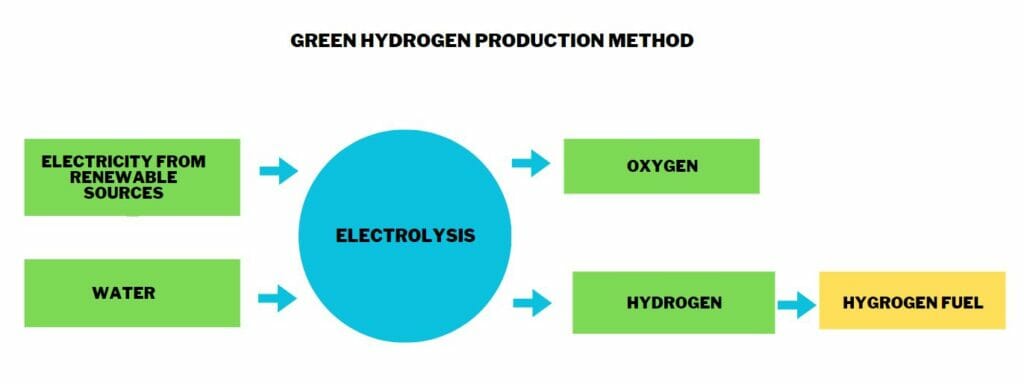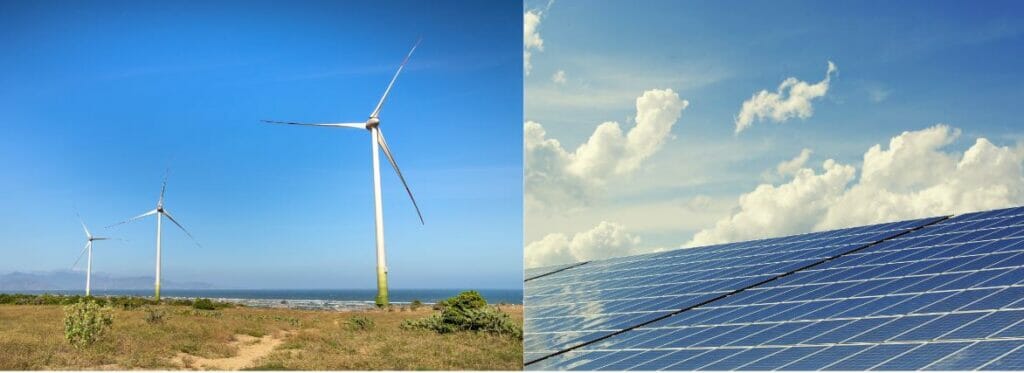India is working hard to find cleaner ways to produce energy. In response to the escalating daily surge in carbon emissions and the shift from conventional thermal energy generation to environmentally sustainable and green energy sources, various renewable energy projects, including wind energy, solar energy, tidal power, hydroelectricity, and more are in the works.
One notable addition to this green energy portfolio is the concept of green hydrogen. This technology is poised to attract substantial investments worth millions of rupees, all over the country in the not-so-distant future. It holds the potential to assume an important role in meeting the energy demands of India over the coming years. However, not many people know about it.
In light of this, let’s delve deeper into the subject of green hydrogen ‘the fuel of the future’. But what is it and what makes it ‘green’?
Let’s understand its merits, obstacles, and it’s current trajectory at the national level, and further narrowing its focus to Maharashtra, one of India’s progressive states, and Mumbai, its bustling metropolis.
What is green hydrogen?
Hydrogen gas is a versatile fuel that finds applications in transportation, power generation, and various industrial processes. One significant advantage of using hydrogen as a fuel is that it doesn’t produce harmful greenhouse gas emissions like carbon dioxide when it undergoes combustion after it is produced.
Hydrogen can be produced from two sources: fossil fuels and clean energy. Right now, most of it (about 95%) is made from coal and gas, which is harmful for the environment – this is called “gray” hydrogen. There’s also a cleaner way to make it, called “blue” hydrogen, which uses a method to capture and store the carbon emissions.
However, when hydrogen is generated through renewable energy sources like wind or solar power, it is referred to as “green hydrogen.” This distinction is due to the fact that green hydrogen is produced using environmentally friendly methods, ensuring that no greenhouse gases are released during its production – making it a full green end to end process.
Read more: Can COP27 impact Mumbai’s fossil fuel phase out?
How is it produced?
Hydrogen is everywhere in the universe. Despite its abundance, hydrogen does not naturally exist as a gas, it mostly occurs in compounds, such as water.
Therefore, hydrogen must be produced using industrial methods. Many of these methods use natural gas, which is a fossil fuel, to create hydrogen. But there are other ways, like a process called electrolysis, where electricity is used to split water into its basic components: hydrogen and oxygen.
This hydrogen is then added in a fuel cell (a device that converts the energy of a chemical into electricity) which then reacts with oxygen to produce electricity and water vapour. Because of hydrogen’s capacity to generate energy without releasing greenhouse emissions, it is a potential clean alternative to fossil fuels.

India’s policy
India has set its sight on becoming energy independent by 2047 and achieving Net Zero by 2070. To achieve this target, increasing renewable energy use across all economic spheres is central to India’s Energy Transition.
Green Hydrogen is considered a promising alternative for enabling this transition. Hydrogen can be utilised for long-duration storage of renewable energy, replacement of fossil fuels in industry, clean transportation, and potentially also for decentralised power generation, aviation, and marine transport.
The National Green Hydrogen Mission was approved by the Union Cabinet on 4 January 2022, with the intended objectives of:
- Making India a leading producer and supplier of Green Hydrogen in the world
- Creation of export opportunities for Green Hydrogen and its derivatives
- Reduction in dependence on imported fossil fuels and feedstock
- Development of indigenous manufacturing capabilities
- Attracting investment and business opportunities for the industry
- Creating opportunities for employment and economic development
- Supporting R&D projects
The mission outcomes projected by 2030 are:
- Development of green hydrogen production capacity of at least 5 MMT (Million Metric Tonne) per annum with an associated renewable energy capacity addition of about 125 GW in the country
- Over eight lakh crore rupees in total investments
- Creation of over six lakh jobs
- Cumulative reduction in fossil fuel imports of over one lakh crore rupees
- Abatement of nearly 50 MMT of annual greenhouse gas emissions

Challenges in production
The cost of hydrogen production, storage, and infrastructure remains a major challenge. Currently, the production of hydrogen from electrolysis using renewable energy sources is more expensive than conventional fossil fuel-based methods.
In a recent report by Economic Times, Sumit D Chowdhury, CEO, Hydreen (a green hydrogen and energy transition company) said that these projects will take a few years before they become practical.
“The green hydrogen projects are not viable yet at the current cost structure unless there are premiums paid for green hydrogen. This could be in the form of some incentives or mandates for consuming industries to buy this green fuel,” said Sumit.
He said that maybe after a few years these projects could become viable provided the government brings provisions to make them self- sustainable. “These incentives could be for low-cost land, low-cost electricity or bringing down the cost of electrolysers. The government should truly partner with the investing industry instead of trying to maximise their revenue upfront.”
Preparations at state and local level
In order to boost renewable energy projects in the state, the Maharashtra state cabinet in July this year gave approval to the state’s Green Hydrogen Policy to promote renewable energy and green hydrogen projects in Maharashtra. The state cabinet also approved Rs 8,562 crore for the implementation of this policy.
Meanwhile in Mumbai, last month, IIT-Bombay partnered with HSBC bank to advance green hydrogen production. The collaboration aims to improve efficiency, cost-effectiveness, and scalability of green hydrogen, positioning it as a strategic alternative fuel.
As India aims to develop a green hydrogen production capacity of 5 million metric tonnes per year by 2030, it has the potential to become a global leader in the production and utilisation of green hydrogen. The investment and policy support can be leveraged to make this vision a reality.
Maharashtra, with its industrial and technological base, could be a key contributor to this journey, while, Mumbai, the financial and commercial heart of the nation, stands to benefit immensely from the energy and economic advantages green hydrogen can offer.